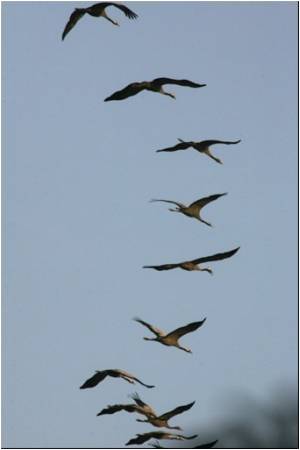It is assumed that by sensing the Earth's magnetic field, salmon, turtles and many birds are able to migrate up to thousands of miles at a time.

The finding-and particularly the new method that enabled it-opens up avenues for all sorts of futuristic applications, including miniaturized GPS systems or gene therapies that would restore sight, hearing or smell to people who have lost those senses.
The ability to detect magnetic-sensitive cells in the lab could also help answer questions about whether people are at risk from magnetic fields produced by power lines and other equipment.
"The key point is really the method we established. Some people call it a game-changer," Discovery News quoted Michael Winklhofer, a biogeophysicist at the University of Munich, as saying.
"Previously, we didn’t have a tool to collect these cells. Now, we can do some serious cell biology on them.
"There’s no doubt that many animals have a magnetic sense, particularly migratory birds and fish. But the problem is, we still don’t know how that works," he added.
Advertisement
When the team applied rotating magnetic fields to those dishes, about one out of every 10,000 cells spun with the same frequency as the fields, the researchers said.
Advertisement
A closer look revealed crystals attached to inside the cell membranes that contained what appeared to be magnetite, an iron-rich magnetic material. Scientists don’t yet know how these structures work, but Winklhofer suspects that they excite membranes inside neurons and trigger nerve impulses that send direction-related information to the brain.
Based on the abundance of magnetic cells in the samples, Winklhofer estimated that each fish had a total of between 10 and 100 of these cells in its nose. As expected, there were no magnetic cells in the animals’ muscle tissue. But in work yet to be published, his group detected even more magnetic cells in the trout’s lateral line, a sensory organ in fish that detects vibrations.
Because magnetic fields penetrate the entire body, magnetic-sensing cells could be sporadically spread throughout in other body parts, too, which would make sense. If the cells were too close together, they would begin to sense each other’s magnetic fields instead of the larger fields around the planet. Like needles in a haystack, though, magnetic cells can be difficult to find, which is what makes the new method so valuable.
The new technique also makes it possible to look for magnetic cells in animals that don’t necessarily use a sense of magnetism but may have retained the cells even as evolution made them obsolete. In a 2008 study, for example, German researchers analyzed Google Earth images and saw that cows and deer tended to stand facing magnetic north or south.
Some recent research suggests that even people might harbor magnetic cells that linger from our ancestral hunter-gatherer days. If so, magnetic fields from power lines could be causing stress inside of our cells, leading to unknown health effects.
Researchers also hope to identify the genes and proteins responsible for producing magnetic-sensing cells, which would go a long way toward explaining how migrating animals accomplish such amazing feats. These discoveries would also pave the way for applications, such as tiny GPS systems or even novel strategies for healing blindness and other sensory problems in people.
The findings have been reported in the Proceedings of the National Academy of Sciences.
Source-ANI









